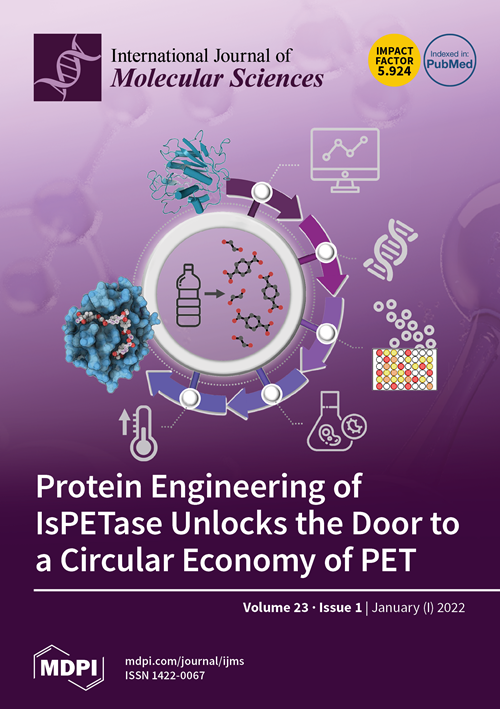Unlocking Prognostic Genes and Multi-Targeted Therapeutic Bioactives from Herbal Medicines to Combat Cancer-Associated Cachexia: A Transcriptomics and Network Pharmacology Approach
IF 4.9
2区 生物学
Q1 BIOCHEMISTRY & MOLECULAR BIOLOGY
引用次数: 0
Abstract
Cachexia is a devastating fat tissue and muscle wasting syndrome associated with every major chronic illness, including cancer, chronic obstructive pulmonary disease, kidney disease, AIDS, and heart failure. Despite two decades of intense research, cachexia remains under-recognized by oncologists. While numerous drug candidates have been proposed for cachexia treatment, none have achieved clinical success. Only a few drugs are approved by the FDA for cachexia therapy, but a very low success rate is observed among patients. Currently, the identification of drugs from herbal medicines is a frontier research area for many diseases. In this milieu, network pharmacology, transcriptomics, cheminformatics, and molecular docking approaches were used to identify potential bioactive compounds from herbal medicines for the treatment of cancer-related cachexia. The network pharmacology approach is used to select the 32 unique genes from 238 genes involved in cachexia-related pathways, which are targeted by 34 phytocompounds identified from 12 different herbal medicines used for the treatment of muscle wasting in many countries. Gene expression profiling and functional enrichment analysis are applied to decipher the role of unique genes in cancer-associated cachexia pathways. In addition, the pharmacological properties and molecular interactions of the phytocompounds were analyzed to find the target compounds for cachexia therapy. Altogether, combined omics and network pharmacology approaches were used in the current study to untangle the complex prognostic genes involved in cachexia and phytocompounds with anti-cachectic efficacy. However, further functional and experimental validations are required to confirm the efficacy of these phytocompounds as commercial drug candidates for cancer-associated cachexia.从中草药中发掘预后基因和多靶点治疗生物活性物质以对抗癌症相关性痛症:转录组学和网络药理学方法
恶病质是一种破坏性的脂肪组织和肌肉萎缩综合征,与癌症、慢性阻塞性肺病、肾病、艾滋病和心力衰竭等各种主要慢性疾病都有关联。尽管经过二十年的深入研究,恶病质仍未得到肿瘤学家的充分认识。虽然已经提出了许多治疗恶病质的候选药物,但没有一种在临床上取得成功。只有少数药物被美国食品及药物管理局批准用于恶病质治疗,但患者的成功率非常低。目前,从中草药中鉴定药物是许多疾病的前沿研究领域。在此背景下,研究人员利用网络药理学、转录组学、化学信息学和分子对接方法,从中草药中鉴定出潜在的生物活性化合物,用于治疗癌症相关恶病质。网络药理学方法用于从参与恶病质相关通路的 238 个基因中筛选出 32 个独特的基因,这些基因被从许多国家用于治疗肌肉萎缩的 12 种不同草药中鉴定出的 34 种植物化合物靶向。基因表达谱分析和功能富集分析被用于解读独特基因在癌症相关恶病质通路中的作用。此外,还分析了植物化合物的药理特性和分子相互作用,以找到治疗恶病质的目标化合物。总之,本研究采用了全局组学和网络药理学相结合的方法,解开了涉及恶病质的复杂预后基因和具有抗恶病质功效的植物化合物。然而,要确认这些植物化合物作为治疗癌症相关恶病质的候选药物的疗效,还需要进一步的功能和实验验证。
本文章由计算机程序翻译,如有差异,请以英文原文为准。
求助全文
约1分钟内获得全文
求助全文
来源期刊

International Journal of Molecular Sciences
Chemistry-Organic Chemistry
CiteScore
8.10
自引率
10.70%
发文量
13472
审稿时长
17.49 days
期刊介绍:
The International Journal of Molecular Sciences (ISSN 1422-0067) provides an advanced forum for chemistry, molecular physics (chemical physics and physical chemistry) and molecular biology. It publishes research articles, reviews, communications and short notes. Our aim is to encourage scientists to publish their theoretical and experimental results in as much detail as possible. Therefore, there is no restriction on the length of the papers or the number of electronics supplementary files. For articles with computational results, the full experimental details must be provided so that the results can be reproduced. Electronic files regarding the full details of the calculation and experimental procedure, if unable to be published in a normal way, can be deposited as supplementary material (including animated pictures, videos, interactive Excel sheets, software executables and others).
 求助内容:
求助内容: 应助结果提醒方式:
应助结果提醒方式:


